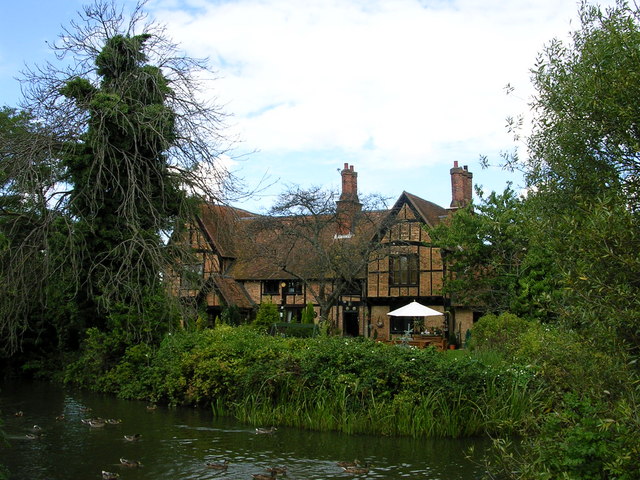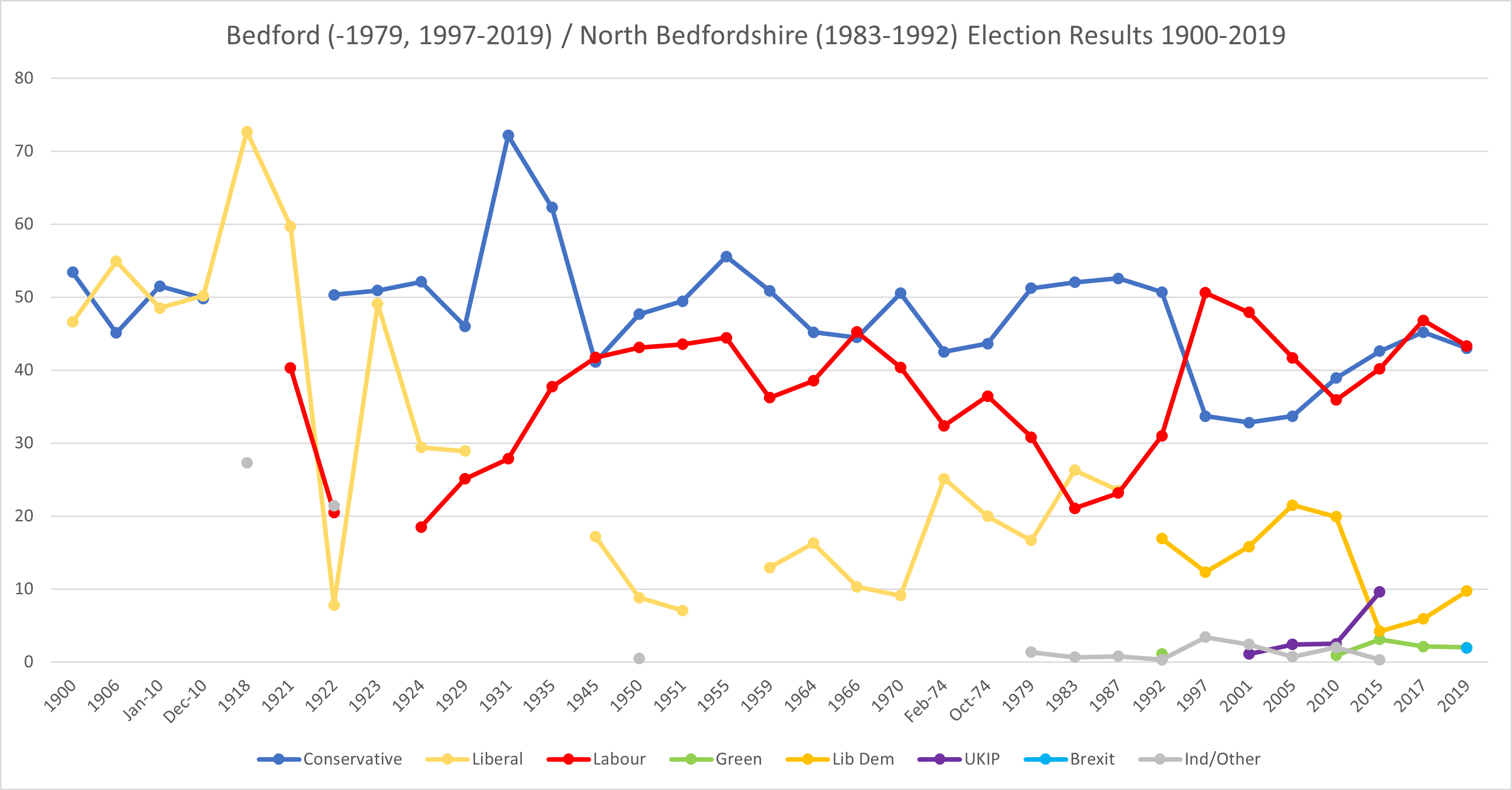|
Moreteyne Manor
Moreteyne Manor (previously known as Moat Farmhouse) is a 15th-century manor house in Marston Moretaine, Bedfordshire, England. For many years it was used as a farmhouse but is now a country house restaurant. It is a Grade II* listed building. The house, originally built in the early 15th century but extended, modified and restored by 1800, is sited within a rectangular moat. It consists of a timber frame with brick infill and a clay tile roof. The crosswings at each end of the central hall are jettied at the first floor level. History The Manor House was owned from 1562 by the Lord of the Manor, Thomas Snagge, followed in 1571 by his son, Thomas Snagge (1536–1593), who was knight of the shire for Bedfordshire (UK Parliament constituency), Bedfordshire in 1571 and 1586 and also MP for Bedford (UK Parliament constituency), Bedford and Speaker of the House of Commons (United Kingdom), Speaker of the House of Commons in 1588. The latter's son, Sir Thomas Snagge (c.1564–1627) was ... [...More Info...] [...Related Items...] OR: [Wikipedia] [Google] [Baidu] |
Marston Moretaine
Marston Moreteyne (or Marston Moretaine) is a large English village and civil parish located on the A421 between Bedford and Milton Keynes in the county of Bedfordshire. The population was 4,560 at the 2001 census, and 4,556 at the 2011 census. The village is served by Millbrook railway station, approximately a mile away on the Marston Vale Line. The place-name 'Marston Moretaine' is first attested in an Anglo-Saxon charter of 969, where it appears as ''Mercstuninga''. It appears as ''Merestone'' in the Domesday Book of 1086. The name derives from the Old English ''mersc-tūn'' meaning 'town or settlement by a marsh'. It was held by the family of Moretaine, from Mortain in Normandy in France. Local roadsigns use either the "Moreteyne" and "Moretaine" spellings inconsistently. The official name of the civil parish was changed in 2018 from Marston Moretaine to Marston Moreteyne following a consultation by Central Bedfordshire Council. Sir Thomas Snagge lived in the village in ... [...More Info...] [...Related Items...] OR: [Wikipedia] [Google] [Baidu] |
Grade II* Listed Building
In the United Kingdom, a listed building or listed structure is one that has been placed on one of the four statutory lists maintained by Historic England in England, Historic Environment Scotland in Scotland, in Wales, and the Northern Ireland Environment Agency in Northern Ireland. The term has also been used in the Republic of Ireland, where buildings are protected under the Planning and Development Act 2000. The statutory term in Ireland is " protected structure". A listed building may not be demolished, extended, or altered without special permission from the local planning authority, which typically consults the relevant central government agency, particularly for significant alterations to the more notable listed buildings. In England and Wales, a national amenity society must be notified of any work to a listed building which involves any element of demolition. Exemption from secular listed building control is provided for some buildings in current use for worship, ... [...More Info...] [...Related Items...] OR: [Wikipedia] [Google] [Baidu] |
Thomas Snagge
Thomas Snagge (1536–1593) was a Member of Parliament, barrister and landowner who served as Speaker of the English House of Commons, Attorney General for Ireland and as Queen's Sergeant.Bedfordshire Library Website, Local Biographies - Thomas Snagge retrieved 3 January 2009 Life Snagge was born in 1536 in . He was the son of Thomas Snagge, the prosperous of |
Knight Of The Shire
Knight of the shire ( la, milites comitatus) was the formal title for a member of parliament (MP) representing a county constituency in the British House of Commons, from its origins in the medieval Parliament of England until the Redistribution of Seats Act 1885 ended the practice of each county (or '' shire'') forming a single constituency. The corresponding titles for other MPs were ''burgess'' in a borough constituency (or '' citizen'' if the borough had city status) and ''baron'' for a Cinque Ports constituency. Knights of the shire had more prestige than burgesses, and sitting burgesses often stood for election for the shire in the hope of increasing their standing in Parliament. The name "knight of the shire" originally implied that the representative had to be a knight, and the writ of election referred to a belted knight until the 19th century; but by the 14th century men who were not knights were commonly elected. An act of Henry VI stipulated that those eligible ... [...More Info...] [...Related Items...] OR: [Wikipedia] [Google] [Baidu] |
Bedfordshire (UK Parliament Constituency)
Bedfordshire was a United Kingdom Parliamentary constituency, which elected two Members of Parliament from 1295 until 1885, when it was divided into two constituencies under the Redistribution of Seats Act 1885. History The constituency consisted of the historic county of Bedfordshire. (Although Bedfordshire contained the borough of Bedford, which elected two MPs in its own right, this was not excluded from the county constituency, and owning property within the borough could confer a vote at the county election.) As in other county constituencies the franchise between 1430 and 1832 was defined by the Forty Shilling Freeholder Act, which gave the right to vote to every man who possessed freehold property within the county valued at £2 or more per year for the purposes of land tax; it was not necessary for the freeholder to occupy his land, nor even in later years to be resident in the county at all. At the time of the Great Reform Act in 1832, Bedfordshire had a population o ... [...More Info...] [...Related Items...] OR: [Wikipedia] [Google] [Baidu] |
Bedford (UK Parliament Constituency)
Bedford is a United Kingdom constituencies, constituency represented in the House of Commons of the United Kingdom, House of Commons of the Parliament of the United Kingdom, UK Parliament since 2017 United Kingdom general election, 2017 by Mohammad Yasin (politician), Mohammad Yasin of the Labour Party (UK), Labour Party. The seat dates to the earliest century of regular parliaments, in 1295; its double representation was halved in 1885, then being altered by the later-termed Representation of the People Act, Fourth Reform Act in 1918. Constituency profile ;Geographical and economic profile Bedford is a marginal seat between the Labour Party (UK), Labour Party and the Conservative Party (UK), Conservatives. The main settlement is Bedford, a well-developed town centre with a considerable amount of social housing relative to Bedfordshire and higher poverty index but on a fast railway link to London and other destinations, the town is at the north end of the Thameslink (route), ... [...More Info...] [...Related Items...] OR: [Wikipedia] [Google] [Baidu] |
Speaker Of The House Of Commons (United Kingdom)
The speaker of the House of Commons is the presiding officer of the House of Commons, the lower house and primary chamber of the Parliament of the United Kingdom. The current speaker, Sir Lindsay Hoyle, was elected Speaker on 4 November 2019, following the retirement of John Bercow. Hoyle began his first full parliamentary term in the role on 17 December 2019, having been unanimously re-elected after the 2019 general election. The speaker presides over the House's debates, determining which members may speak and which amendments are selected for consideration. The speaker is also responsible for maintaining order during debate, and may punish members who break the rules of the House. Speakers remain strictly non-partisan and renounce all affiliation with their former political parties when taking office and afterwards. The speaker does not take part in debate or vote (except to break ties; and even then, the convention is that the speaker casts the tie-breaking vote accor ... [...More Info...] [...Related Items...] OR: [Wikipedia] [Google] [Baidu] |
Thomas Snagge (c
Thomas Snagge (1536–1593) was a Member of Parliament, barrister and landowner who served as Speaker of the English House of Commons, Attorney General for Ireland and as Queen's Sergeant.Bedfordshire Library Website, Local Biographies - Thomas Snagge retrieved 3 January 2009 Life Snagge was born in 1536 in . He was the son of Thomas Snagge, the prosperous of |
Sarah, Duchess Of Marlborough
Sarah Churchill, Duchess of Marlborough, Princess of Mindelheim, Countess of Nellenburg (née Jenyns, spelt Jennings in most modern references; 5 June 1660 Old Style and New Style dates, (Old Style) – 18 October 1744), was an English courtier who rose to be one of the most influential women of her time through her close relationship with Anne, Queen of Great Britain. Churchill's relationship and influence with Princess Anne were widely known, and leading public figures often turned their attentions to her, hoping for favour from Anne. By the time Anne became queen, the Duchess of Marlborough's knowledge of government and intimacy with the Queen had made her a powerful friend and a dangerous enemy. Churchill enjoyed a "long and devoted" relationship with her husband of more than 40 years, the great general John Churchill, 1st Duke of Marlborough. After Anne's father, King James II, was deposed during the Glorious Revolution, Sarah Churchill acted as Anne's agent, promoting ... [...More Info...] [...Related Items...] OR: [Wikipedia] [Google] [Baidu] |
John Spencer (British Politician)
John Spencer (13 May 1708 – 19 June 1746) was a British nobleman and politician who sat in the House of Commons from 1732 to 1746. Early life Spencer was born on 13 May 1708 and was the youngest son of the 3rd Earl of Sunderland, the First Lord of the Treasury and Lord President of the Council under George I, and his second wife, Lady Anne Churchill, who served as Lady of the Bedchamber to Queen Anne from 1702 to 1712. From his father's first marriage to Lady Arabella Cavendish, daughter of the 2nd Duke of Newcastle, he was a half brother to Lady Frances Spencer, the wife of the 4th Earl of Carlisle. From his parents' marriage, his older full siblings were: Robert Spencer, who died young; Robert Spencer, 4th Earl of Sunderland; Lady Anne Spencer, who married Viscount Bateman; Charles Spencer, 5th Earl of Sunderland, who succeeded their aunt, Henrietta Godolphin, 2nd Duchess of Marlborough, as 3rd Duke of Marlborough. His younger sister, Lady Diana Spencer, marrie ... [...More Info...] [...Related Items...] OR: [Wikipedia] [Google] [Baidu] |
Duke Of Bedford
Duke of Bedford (named after Bedford, England) is a title that has been created six times (for five distinct people) in the Peerage of England. The first and second creations came in 1414 and 1433 respectively, in favour of Henry IV's third son, John, who later served as regent of France. He was made Earl of Kendal at the same time and was made Earl of Richmond later the same year. The titles became extinct on his death in 1435. The third creation came in 1470 in favour of George Neville, nephew of Warwick the Kingmaker. He was deprived of the title by Act of Parliament in 1478. The fourth creation came in 1478 in favour of George, the third son of Edward IV. He died the following year at the age of two. The fifth creation came in 1485 in favour of Jasper Tudor, half-brother of Henry VI and uncle of Henry VII. He had already been created Earl of Pembroke in 1452. However, as he was a Lancastrian, his title was forfeited between 1461 and 1485 during the predominance of the H ... [...More Info...] [...Related Items...] OR: [Wikipedia] [Google] [Baidu] |




